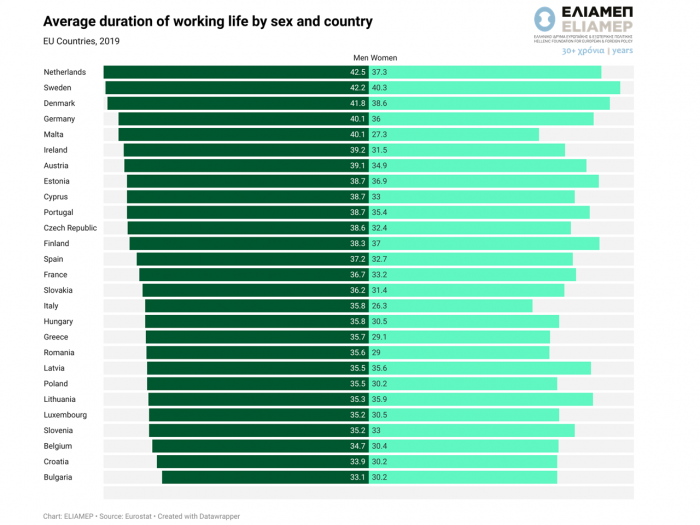One of the most serious challenges for the well-being of EU citizens is the demographic problem. As the population ages and the share of non-working citizens in the total population increases, the share of resources that the working population must shoulder, to keep the level of pensions stable, is increased. These resources depend on the total volume of workers’ social security contributions, which in turn depends to a significant extent on the length of their working life. Next, we look at the length of working in EU member states.
The graph presents Eurostat data showing the average working lifespan in years. Data are presented for both men and women in EU countries for 2019. As far as the men are concerned, we note that the countries with the longest working life are the Netherlands (42.5 years), Sweden (42.2 years), and Denmark (41.8 years). On the contrary, the countries with the shortest working life are Bulgaria (33.1 years), Croatia (33.9 years), and Belgium (34.7 years). In Greece, men work an average 35.7 years, slightly less than the European average (35.9). Women work the longest in Sweden (40.3 years), Denmark (38.6 years), and the Netherlands (38.3 years). The countries with the lowest female working lifespan are Italy (26.3 years), Malta (27.3 years), and Greece (29.1 years).
In Greece, the extension of women’s working life and their consequent contribution to the increase of social security contributions will be decisive for the sustainability of the insurance system. It is important to emphasize that recent reforms follow this direction, although their results are not yet visible in the official data, which reflect the previous regime of frequent early retirements and low labour force participation.




